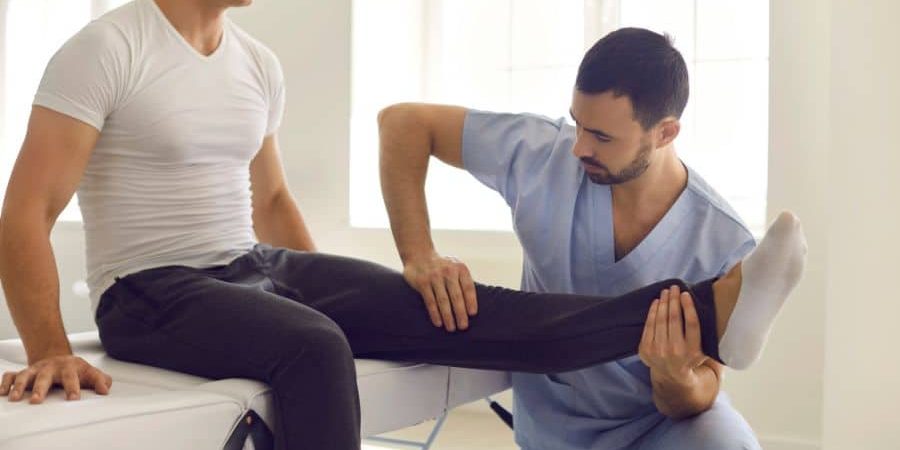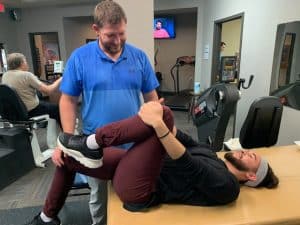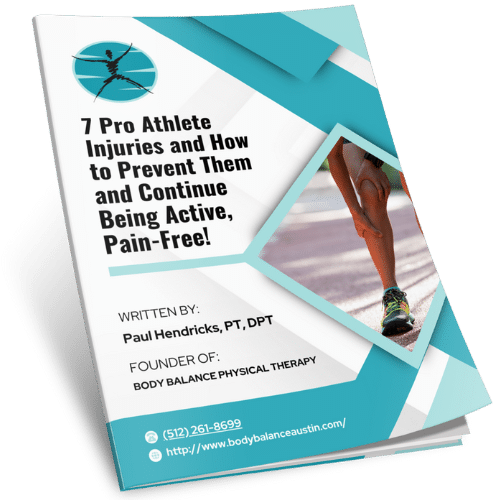Click The Button Below To Learn How We Can Help Your Injury!

Our mission is to help people make better decisions about their health and add a little joy to their day. With Body Balance we will help you pursue growth & lifelong learning with honest & open communication channels.

Some athletes head home with sports medals, while others wear sporting knee braces due to anterior cruciate ligament (ACL) injuries. This “mother of all injuries” usually knocks athletes out for the season, since it typically involves a six- to nine-month recovery process.
While hard hits and falls while skiing can cause ACL tears, they usually occur without contact, such as when an athlete makes an awkward landing or pivots on a planted foot. (The injuries are common in football, basketball, lacrosse and soccer.) Training the leg muscles to fire properly — and having good form — can help keep ACL injuries from sidelining you.
The ACL is a band in the knee that connects the thighbone (femur) to the shinbone (tibia). It helps stabilize the knee and controls rotation of the leg.
Studies show that the ACL is under more stress when the knee is straight or bent five to 20 degrees. An inwardly directed force (think “knocked-knee position”) also stresses the ACL. If the force exceeds the strength of the ligament, a tear can occur. Athletes will often complain of a “popping,” followed by pain and swelling. The knee loses stability, and the resulting grinding and excessive motions can cause wear and tear on the joint and surrounding soft tissues.
It’s like the perfect storm when an ACL injury occurs: A few factors simultaneously combine to wipe an athlete out for a season. (Imagine that you’re rebounding in basketball, and you land with your knee straight. Add weak buttocks and weak hamstrings that aren’t efficiently supporting the ACL, and… pop!)
Players participating in sports involving sudden stops, jumps and pivoting motions are most at risk for ACL injuries. Muscle imbalances and poor form are partly to blame.
© 2005 – 2021 WebMD LLC. All rights reserved.
WebMD does not provide medical advice, diagnosis or treatment.
ACL tears are becoming more prevalent in our society.
From competition athletes to weekend warriors, the prevalence of ACL tears is well over 200,0001. Research shows that the rate of a second ACL tear after an initial tear in 5 years is 12%, in 10 years 27%, and 15 years 31%1 with these 2nd ACL tears occur in the same leg and the opposite leg.
The known mechanisms of ACL tears are dynamic knee valgus (caving in of the knees), stiff legged landings and poor core strength. All of these movements tie in at the hips and it is important to have good hip stability and proper loading through the hips with jumping, landing, running, and cutting.
Now, while no ACL tear is 100% preventable as there are factors such as slick surfaces and other athletes that we cannot control, there are certain motions and abilities that we must possess to help place the forces that are transmitted to the knee are mechanically sounds and do not put any excess force on the ligaments to help reduces the risk of an injury.
1- Paterno MV. Incidence and Predictors of Second Anterior Cruciate Ligament Injury After Primary Reconstruction and Return to Sport. J Athl Train. 2015;50(10):1097-1099. doi:10.4085/1062-6050-50.10.07

To find out of physical therapy is right for you, book a FREE discovery visit now!
Are you unsure if physical therapy is right for you? Would you prefer to talk with a PT before making a decision? All you have to do is click the link below to fill out a simple form.
If you’re not quite ready to book an appointment yet and have some questions you would like answered first, click the link below to complete a form to get the conversation started.
